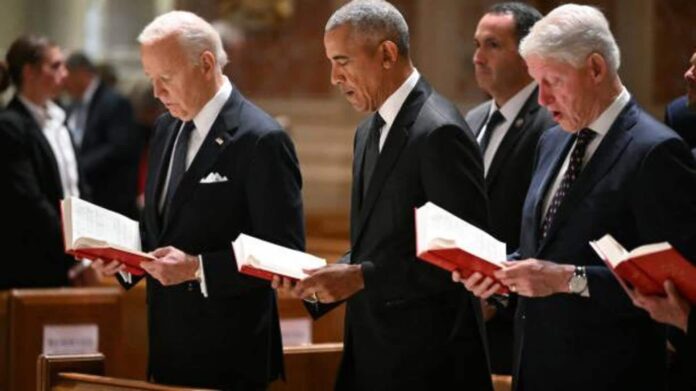Why the 22nd Amendment Limits U.S. Presidents to Two Terms in Office
The question of term limits for U.S. presidents has long been a topic of discussion, especially when speculation arises about potential candidates for the presidency. Recently, before Kamala Harris was confirmed as the Democratic presidential candidate following Joe Biden’s decision not to seek re-election, former President Barack Obama’s name was mentioned. However, the idea of Obama returning to the Oval Office was quickly dismissed due to the stipulations of the 22nd Amendment to the U.S. Constitution, which limits the presidency to two terms. Understanding the historical context and implications of this amendment reveals much about American democracy and governance.
The 22nd Amendment was ratified in 1951 as a direct response to Franklin D. Roosevelt’s unprecedented four-term presidency. Roosevelt was elected four times—from 1932 until his death in 1945—serving longer than any other president in U.S. history. His lengthy tenure raised significant concerns regarding the concentration of power in the executive branch. Observers feared that allowing a president to serve indefinitely could lead to authoritarianism and diminish the democratic process.
In the wake of Roosevelt’s presidency, there was a strong push for reform. The 22nd Amendment was introduced to prevent any future president from serving more than two terms. Specifically, Section 1 of the amendment states, “No person shall be elected to the office of the President more than twice.” Furthermore, it also includes a provision that states if someone serves as president for more than two years of a term to which someone else was elected, they can only be elected for one additional term.
The imposition of term limits on the presidency has profound implications for American politics. By limiting presidents to two terms, the amendment aims to foster democratic leadership transitions and prevent the entrenchment of power. It encourages the introduction of new ideas and policies, allowing for a broader representation of the electorate over time.
Moreover, term limits can contribute to a healthy political environment where fresh leadership can emerge. This dynamic fosters competition within political parties, encouraging them to identify and support new candidates who may resonate with the evolving priorities and concerns of the American populace.
However, critics of term limits argue that they may inadvertently restrict the electorate’s ability to choose their preferred leader. If a popular president is delivering effective governance, the argument is that the voters should have the right to re-elect them as many times as they desire. This criticism highlights the tension between ensuring democratic accountability and allowing for popular choice. Presidents
In contrast to the United States, many countries do not impose term limits on their heads of government. For example, India, the world’s largest democracy, does not have constitutional restrictions on the number of terms a Prime Minister or President can serve. As a result, individuals in these positions can be elected an unlimited number of times, although most Indian leaders have served only one or two terms. Presidents
Jawaharlal Nehru, India’s first Prime Minister, served for 16 years and 286 days across three terms, setting a record that remains unbroken. Nehru’s long tenure allowed him to implement significant policies that shaped modern India. However, without term limits, the concern of potential authoritarianism arises, as leaders may seek to remain in power indefinitely, consolidating their influence over time.
Some nations, like Russia and China, have also faced similar challenges. In Russia, President Vladimir Putin has maneuvered through constitutional amendments to extend his time in power, while China recently abolished presidential term limits altogether. These examples serve as cautionary tales for advocates of unlimited terms, highlighting the risk of consolidating power within a single individual or party. Presidents
The debate over term limits is ongoing in the United States. While the 22nd Amendment stands firm, there have been periodic discussions regarding its potential repeal. Advocates for repeal argue that such a change would enhance democratic choice and allow for the continued leadership of capable presidents.
Conversely, many Americans appreciate the safeguards that term limits provide. They view the amendment as a necessary measure to ensure that power does not become concentrated and that governance remains responsive to the electorate’s will. This perspective underscores the broader belief in the importance of checks and balances within the U.S. political system.
The 22nd Amendment remains a pivotal aspect of U.S. political structure, ensuring that no president can serve more than two terms in office. The historical context of its ratification reflects a commitment to preventing the concentration of power and promoting democratic transitions in leadership. While other countries may allow for unlimited terms, the U.S. model emphasizes accountability and responsiveness to voters.
As political dynamics evolve, the implications of term limits continue to resonate in discussions about American democracy. Whether viewed as a necessary safeguard or a restriction on choice, the 22nd Amendment shapes the landscape of U.S. governance, ensuring that leadership is both accountable and representative of the people’s will.

